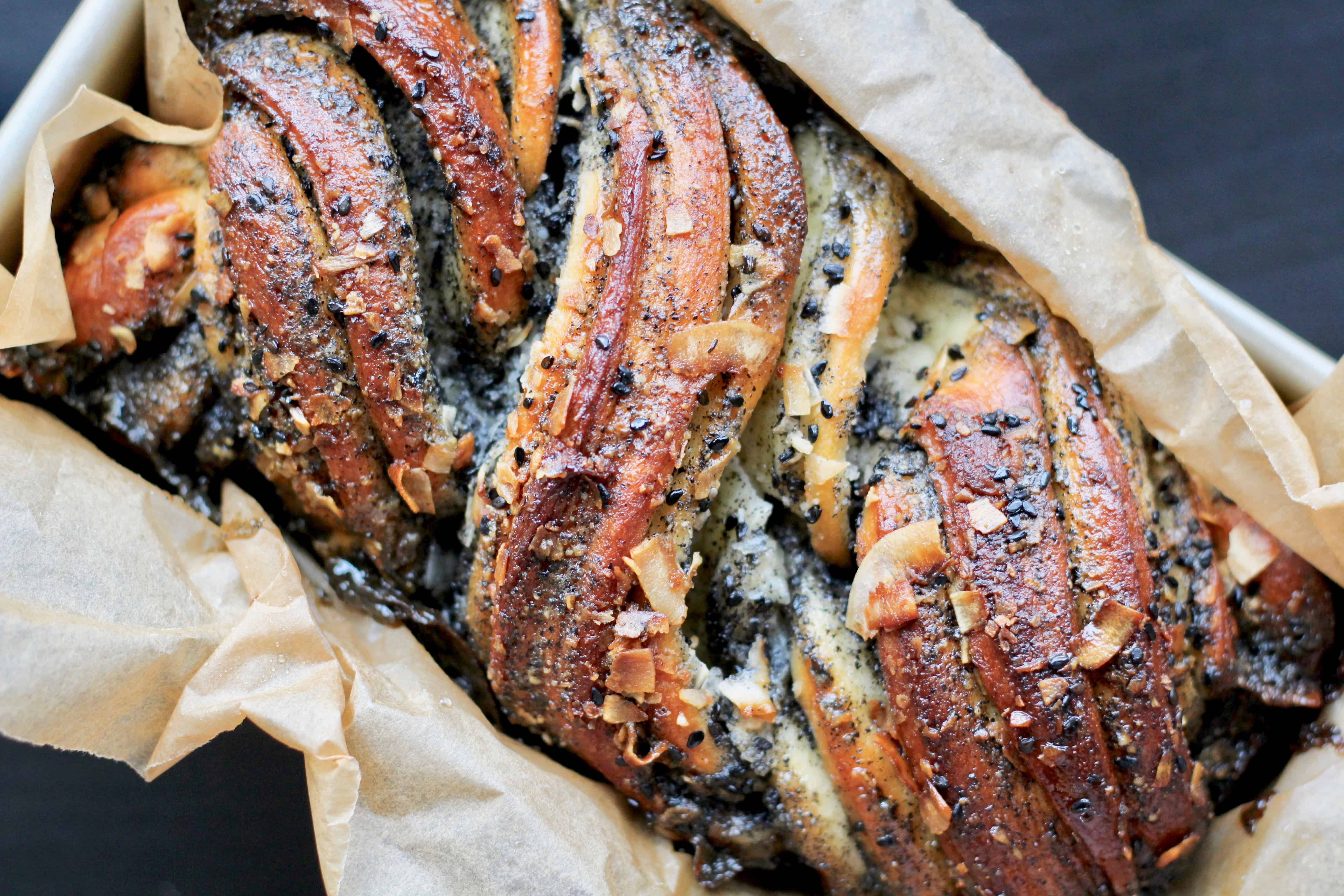
So far in 2018, I’ve been babka-ing hard. Ever since I made Chocolate-Halva Babka at the end of last year, I have been hitting the babka dough every chance I get, which is still not as often as I’d like, considering that it’s a 2-day process and as a blogger, I also have to take natural daylight into account. But really, barely a day goes by that another babka variation doesn’t pop into my head– the list is long, so I will continue to babka well into next year at this rate. And you might think I’m complaining about that, but let me assure that that could not be farther from the truth! I’ve mentioned before that I have exactly 0% natural feel for working with dough, but when I first made Ottolenghi’s babka dough, as recommended by Smitten Kitchen, it was a pretty transformative experience. A dough that does what it’s supposed to? A dough that comes out smooth and easy to work with? A dough that doesn’t make me anxious about messing it up every time? Check, check, and check! When Deb Perelman tells me something about baked goods, she’s usually right, and definitely in this case. I’ve been able to make all sorts of scrumptious variations with this dough, many of which I’m tweaking until they are just right for posting.
I’ve been really interested in baking with black sesame recently, as it pairs so beautifully with a lot of different flavors, and I thought that Chinese New Year would be a nice time to share this Black Sesame Coconut Babka. I am also a 0% expert on Chinese pastry, so this is not meant to be any sort of authentic anything in the realm of Asian desserts. I got the idea from Belinda Leong of b.patisserie in San Francisco, aka the QUEEN of kouign amann in San Francisco (possibly America?), who makes a world-rocking seasonal black sesame kouign amann for Chinese New Year, and it is literally one of my favorite things in the whole world. So I thought, why not create a similar homage, but with babka? (Because the day I can make a perfect kouign amann is the day I will have reached the actual peak of my life.) I like to make babka variations with two complimentary flavors because I think it’s more interesting that way, and coconut seemed to be a wonderful sidekick to black sesame, so here we are.
I flavored the dough with pure coconut extract and made a filling of ground black sesame seeds with honey, butter, and sugar, and I also sprinkled coconut flakes and whole sesame seeds on top, which get all toasty in the oven– I love the balance of the two flavors with the lightly sweet dough. You could also sprinkle toasted coconut flakes over the filling for more coconut flavor, or mix ground toasted black sesame seeds into the dough. I did neither of these, but if you want an extra punch of either flavor, please let me know how it goes for you. The only thing I might change in the future is to use a little more filling, maybe increase it 25% for each loaf. But then it might get a little decadent, and we wouldn’t want that. Okay, yes we would. Again, if you try that, let me know– I’ll probably give it a whirl, but in the meantime, I am super happy with my sesame-coconut loaves, and if we’re being honest, I didn’t bring them to work like I usually do because who would want to share this? I mean, with other people who are going to eat it, so there’s less for you? We’re on the same page here, yeah? 😉
One of the things you can do whilst hoarding the babka is making a sorta-amazing French toast. In a shallow dish, whisk together about ½ quart of whole milk, a couple tablespoons of sugar, and 1 tablespoon of vanilla, and let’s say 5-6 whisked eggs in a second shallow dish. Feel free to adjust the sugar and vanilla to taste– I honestly didn’t really measure it too closely. Soak thick slices of babka in the milk mixture for a couple of minutes, flipping them a couple of times, then dip and flip them in the eggs, then fry in butter, and proceed to have a fabulous day!
Black Sesame Coconut Babka
Yields 2 – 9×5″ loaves
For the dough (adapted from Jerusalem by Yotam Ottolenghi & Sami Tamimi, with help from Smitten Kitchen):
- 4¼ cups (510g) all-purpose flour, plus about 2 tablespoons more if the dough is sticking in the mixer
- ½ cup (100 grams) granulated sugar
- 2 teaspoons dry instant yeast
- 3 large eggs, at room temperature
- ½ cup water (cold is fine) and up to 1-2 tablespoons extra, if needed
- 2 teaspoons coconut extract, preferably pure
- ¾ teaspoon fine sea salt
- ⅔ cup unsalted butter (150g/5.3 ounces/just shy of 11 tablespoons), at room temperature
- Neutral-flavored oil, such as canola or sunflower, for greasing
For the black sesame filling (adapted from FixFeastFlair):
- 12 tablespoons (1½ sticks/6 ounces/170g) unsalted butter, softened
- ½ cup (100g) granulated sugar
- 3½ tablespoons mild honey
- ¼ cup + 1 tablespoon (30g) toasted black sesame seeds, coarsely ground
For assembly:
- 2 tablespoons raw unsweetened coconut flakes
- 2 tablespoons raw black sesame seeds
For the sugar syrup (adapted from Jerusalem):
- 6 tablespoons (75g) granulated sugar
- ⅓ cup (5 tablespoons) water
To make the dough:
Place the flour, sugar, and instant yeast in the bowl of a stand mixer fitted with the paddle attachment; mix on low speed for a few seconds until the ingredients are evenly combined. Add the eggs, ½ cup water, and coconut extract, mixing on low until just about all the dry ingredients are swept off the bottom of the bowl. Switch to the dough hook and mix on low until the dough comes comes together in a rough mass. The dough may look a little dry, which is fine; if it doesn’t come together at all, add more water, 1 tablespoon at a time, until the dough pulls together. With the mixer still on low, add the salt, then the butter, a tablespoon or so at a time, mixing until each piece is blended into the dough. The dough will start off tight and rigid, and as you add butter, it will loosen and appear sticky/buttery.
Once all the butter has been added, turn the mixer up to medium speed for about 10 minutes until the dough is totally smooth. If/when the dough gets sticky in the bottom of the bowl, sprinkle in a little flour at a time (I used 2 tablespoons) until it is consistently pulling away from the bowl; scrape down the sides and bottom of the bowl and the dough hook occasionally to make sure all the dough is getting mixed evenly. The dough should be smooth and elastic, with a silky texture, and it should tip out of the bowl fairly easily.
Grease a large bowl with neutral-flavored oil and place the dough inside; cover the bowl tightly with plastic wrap and refrigerate for at least 12 hours, and preferably closer to 24 hours. The dough will rise visibly, but will not fully double.
To make the filling:
When you’re ready to use the dough, place the butter, sugar, honey, and ground black sesame seeds in a medium mixing bowl. Beat together with a hand mixer until you have a smooth, fluffy, dark gray mixture, similar to the texture of frosting. (This can also be done with a stand mixer.)
To assemble the babka loaves:
Line each of two 9×5″ loaf pans with a large piece of parchment paper that covers the bottom and hangs over on all sides (for pulling the loaves up and out later).
Remove the dough from the fridge and cut it in half, then return the other half to the fridge. Gently shape the dough into a rough rectangle with your hands if possible. Roll it out on a well-floured work surface such that one side is about 10″ wide and as long in length as you can get when rolling it about ¼” thick, about 10 to 12″. Position it so that the short side is closest to you. If your sides are uneven, trim any rogue edges and patch deficient areas, such as corners that are too rounded– it totally doesn’t matter if the patchwork isn’t perfect, since you’ll be rolling the whole thing up and any flaws will be hidden. (Mine was roughly a rectangle shape once I patched my corners, and it’s perfectly fine if it’s more of a square.)
Spread half of the black sesame filling evenly over the dough with a small offset spatula, leaving a ½” border all the way around. Brush the edge farthest away from you lightly with water. Starting with the edge of dough closest to you, carefully roll it up with the filling into a long, tight log, trying to roll evenly so that the log’s thickness is fairly uniform in the center and out to the edges. Seal the dampened edge of the log. Gently place the log on a sheet pan or tray and place it in the freezer for about 15 minutes or until the log is semi-firm (not frozen) while you work with the second piece of dough. Remove the second piece of dough from the fridge and repeat the rolling out/filling/rolling up/freezing process above.
Trim about ½” off each end of the logs. Gently slice each log in half lengthwise with a sharp knife and lay the halves next to each other on the counter, cut sides up. (Take a moment to behold the beauty of your handiwork!) Lay one piece across the center of the other at an angle, so that the dough pieces look like an ‘X’. Twist the pieces around each other, keeping the cut sides facing out as much as you can; you will have two large twists. Carefully transfer each twist to one of the prepared loaf pans, wedging them in and forming an “S” shape if needed. You can place the ends that you trimmed into any gaps in the pans– it’s okay if this looks messy or not especially pretty; the dough will fill in any holes by the time it’s done rising and baking. Sprinkle 1 tablespoon each of coconut flakes and sesame seeds on top of each loaf.
Cover the loaf pans with a damp tea towel and leave the loaves to rise for 60-90 minutes at room temperature. They will rise only about 10-20%– the dough will look and feel slightly puffy.
To bake and finish the loaves:
After the loaves have been rising for about 40 minutes, heat an oven to 375°F and place a rack in the center position. Remove the tea towel and move the pans into the oven, spaced a little apart. The loaves will bake for about 45 minutes; loosely cover them with aluminum foil after about 20 minutes, or when the coconut flakes start getting dark. You can check for doneness at 40 minutes with a wooden skewer– mine took a full 45 minutes. (Underbaked babka dough will feel stretchy/rubbery inside and the skewer may come out with dough on it. When it’s fully baked, you’ll feel almost no resistance, although you may have some black sesame filling on the skewer.) If the babkas need more time, bake them for another 3 minutes at a time and re-test. Transfer the loaves to a metal cooling rack. The tops should be dark golden brown and puffed.
While the babkas are baking, make the sugar syrup. Stir together the sugar and water in a small saucepan and bring the mixture to a simmer, stirring until the sugar dissolves. Remove the pan from the heat and let it cool a bit. As soon as the babkas exit the oven, brush the syrup all over them. It will seem like way too much, but it really is the right amount for glossy, moist loaves, so do use all of it. Let the babkas cool for about 1 hour in the pans, then transfer them directly to the cooling rack to cool completely by pulling up on the parchment paper. (If you nibble while they’re warm, it’ll stay between us– I pinky swear.)
The babka is best on the day it’s baked, then starts to get a little dry. Store leftovers in an airtight container for up to two days. Babka freezes very well in a ziplock bag and is the best way to prolong its life if you don’t plan to eat it right away. Also, the toaster oven does wonders for 1- or 2-day-old babka, and this flavor of babka makes *excellent* French toast! (See above for loose directions.)
© Dafna Adler & Stellina Sweets, 2018.
SaveSaveSaveSave






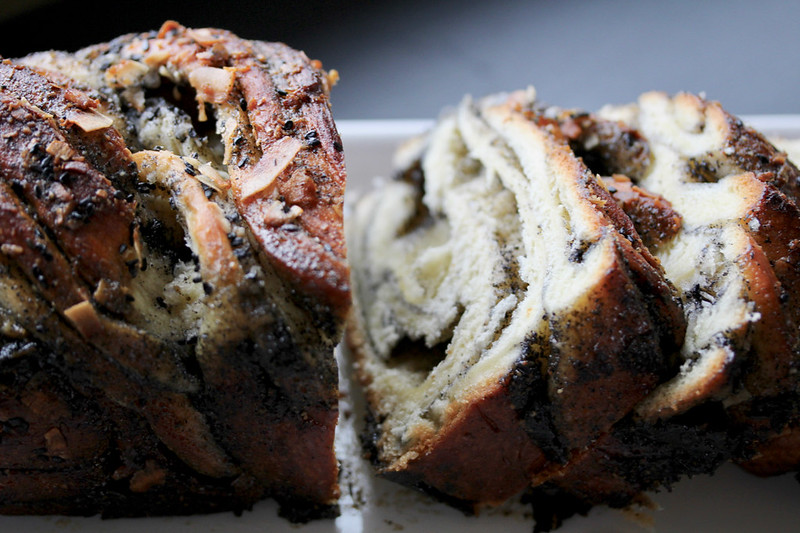
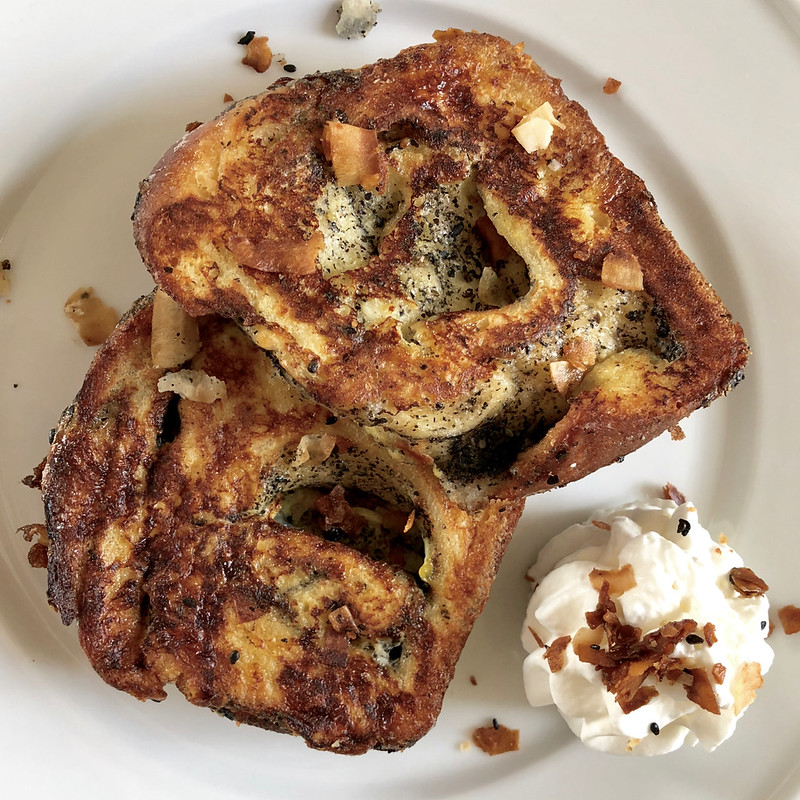
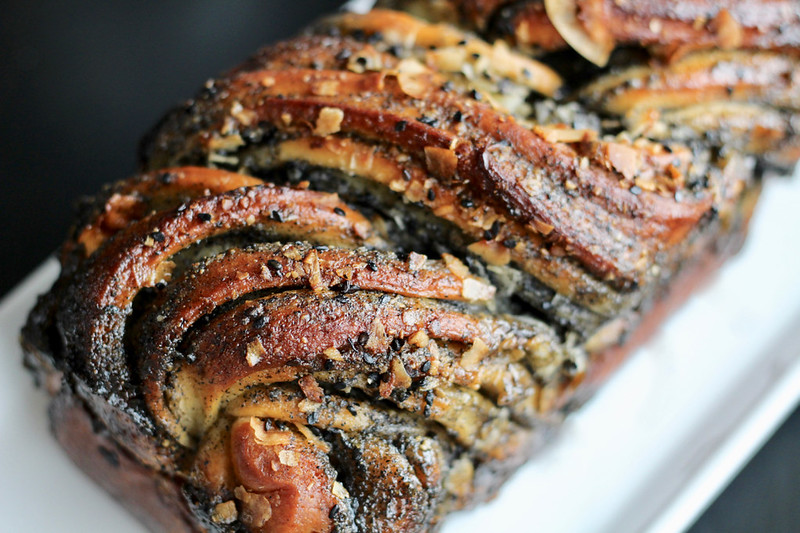



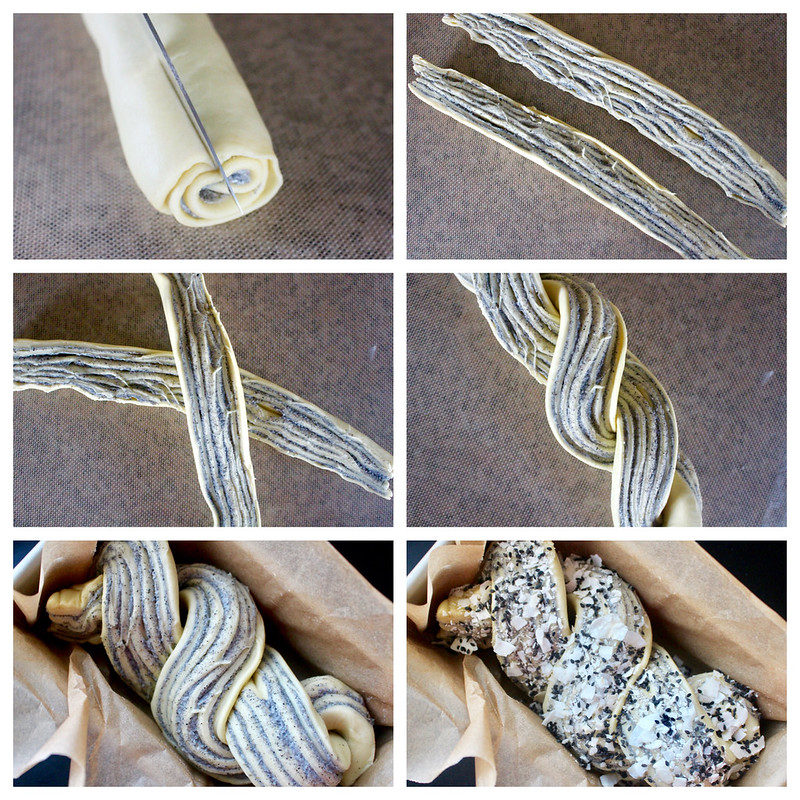



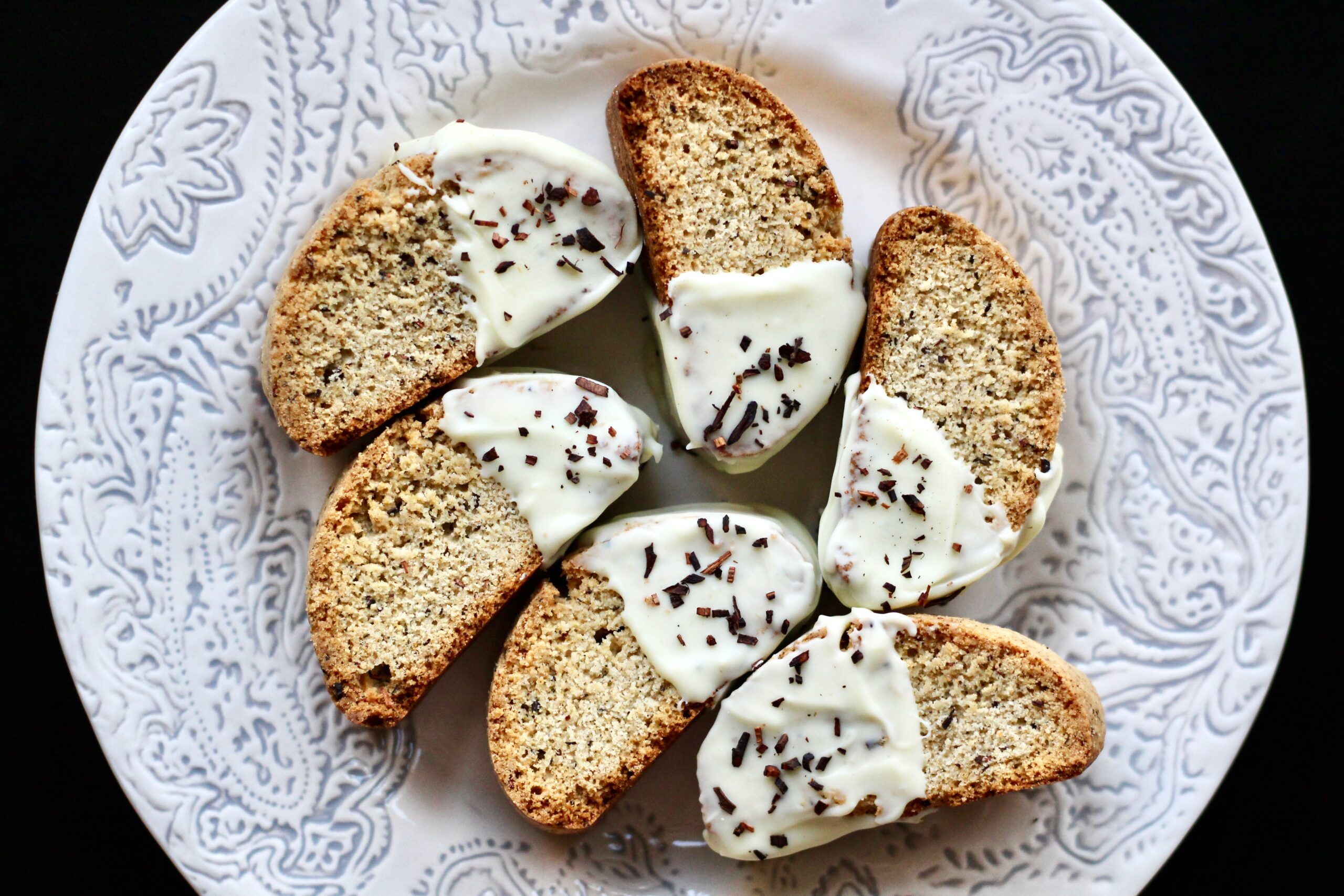
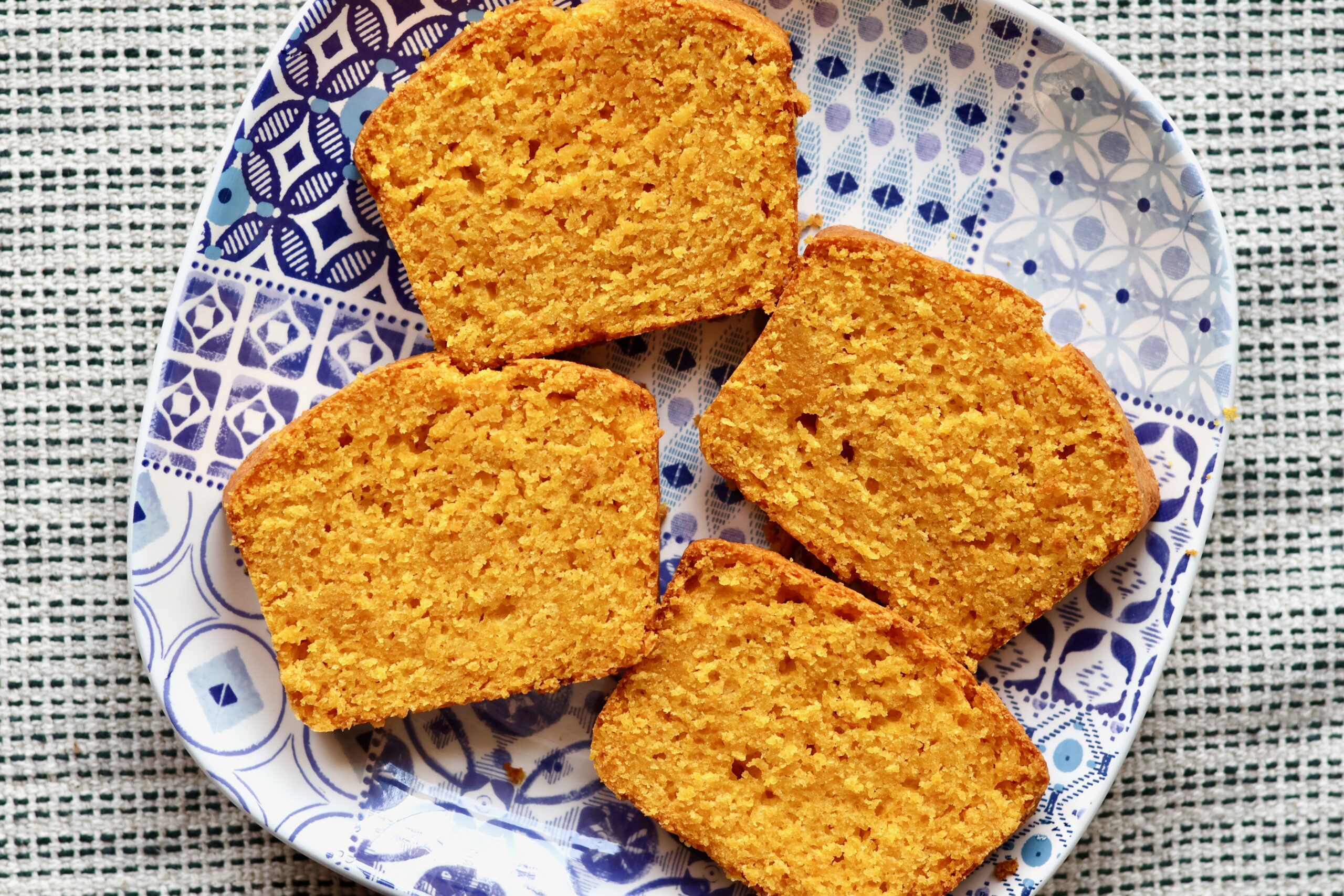
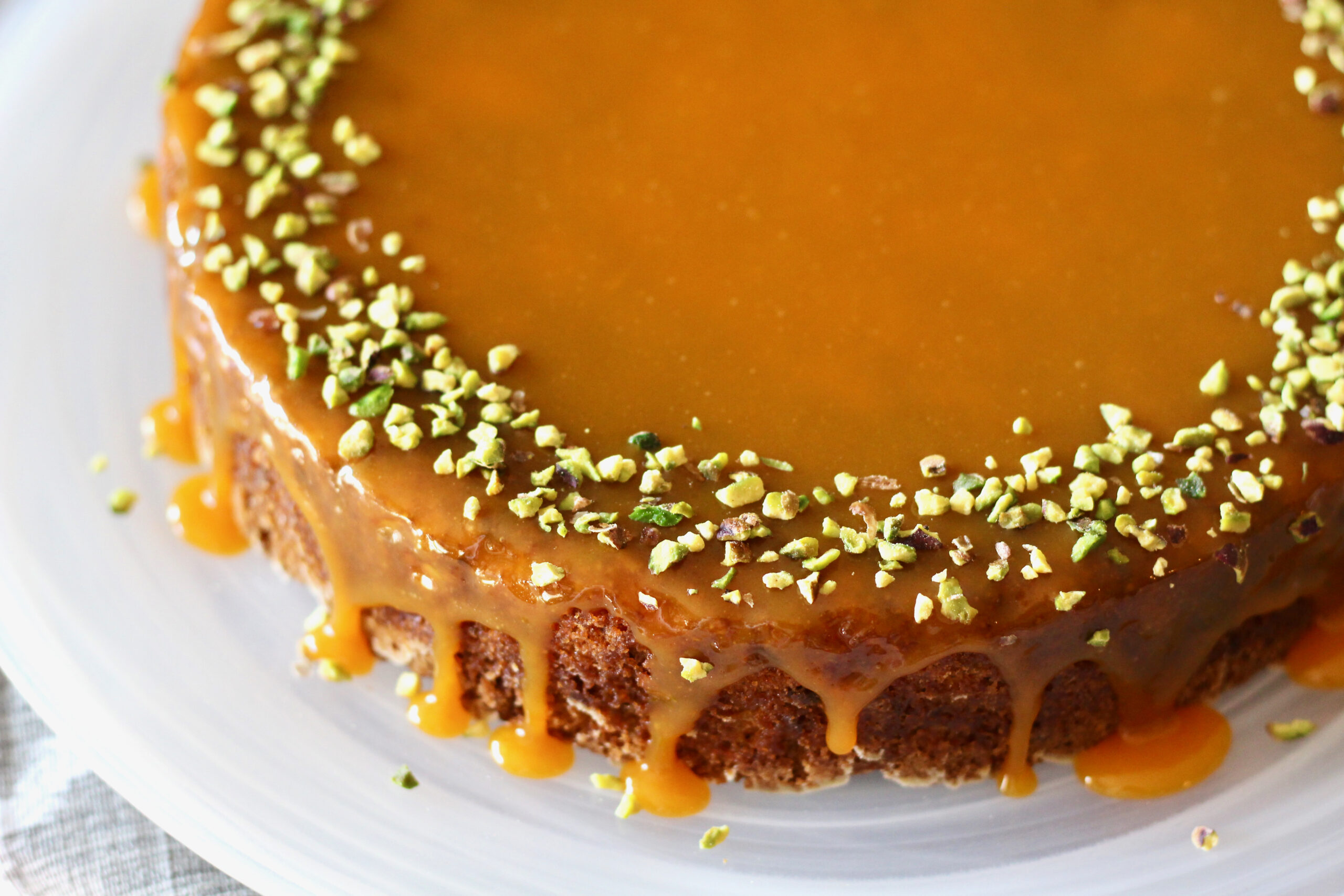
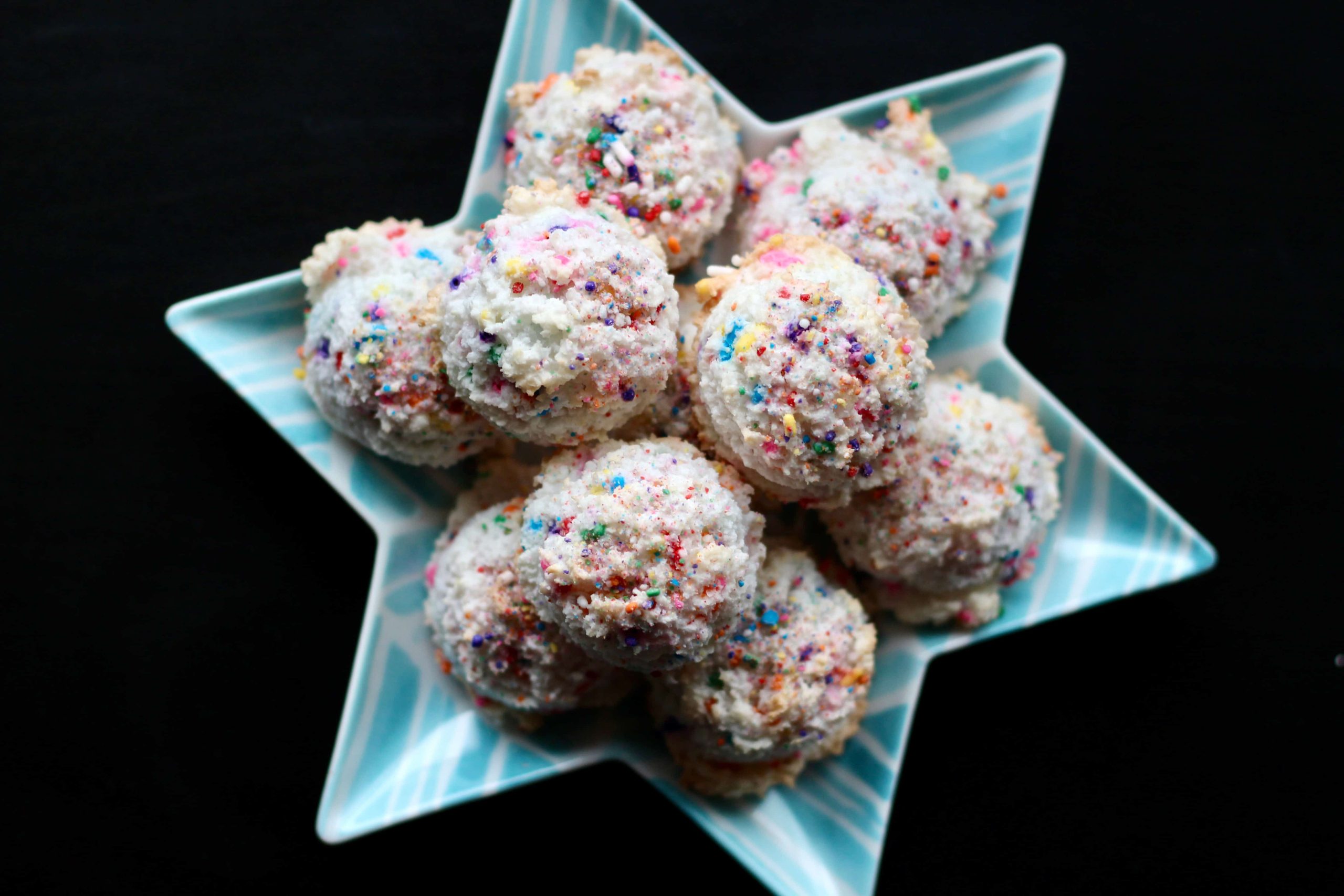

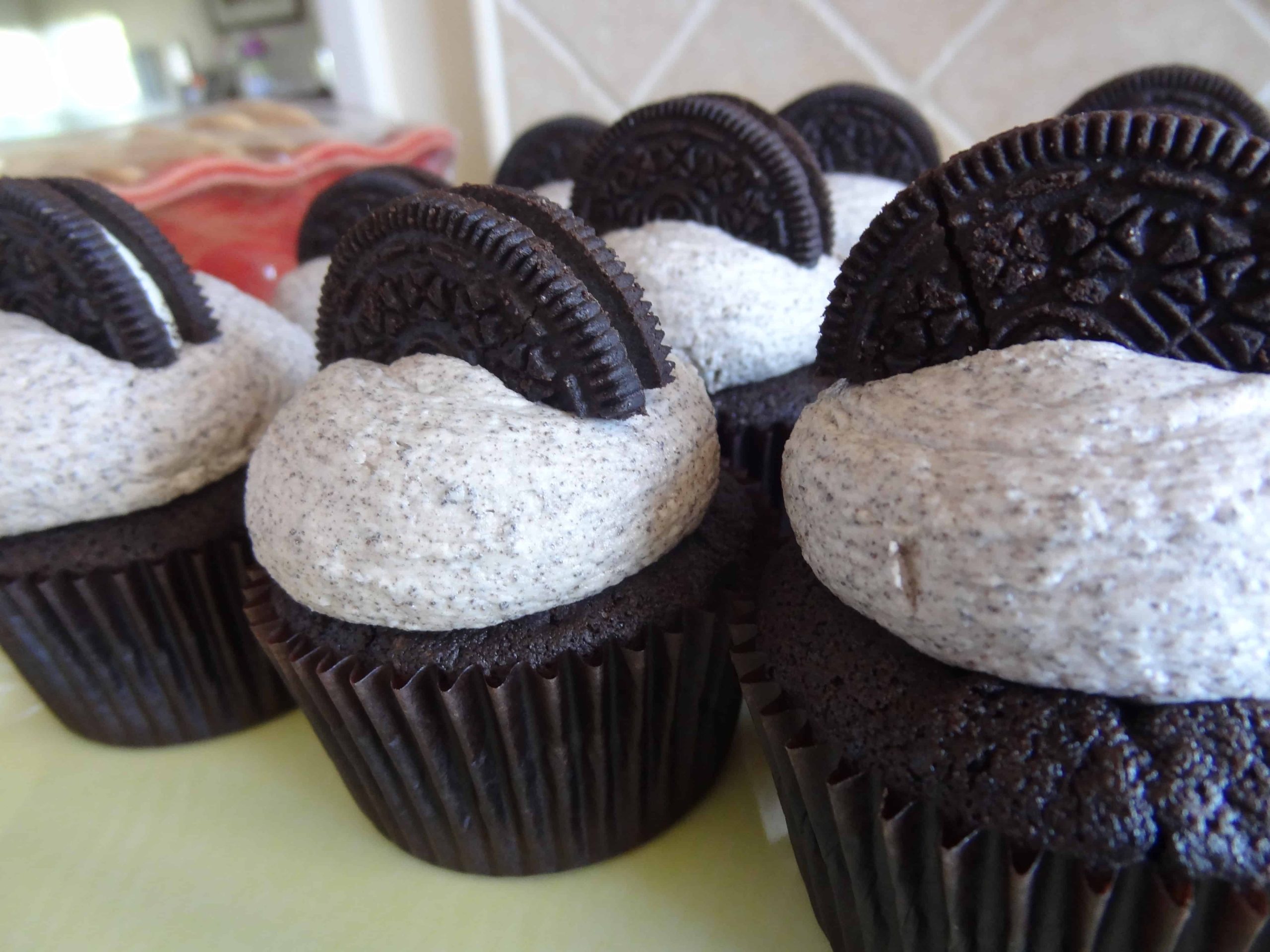

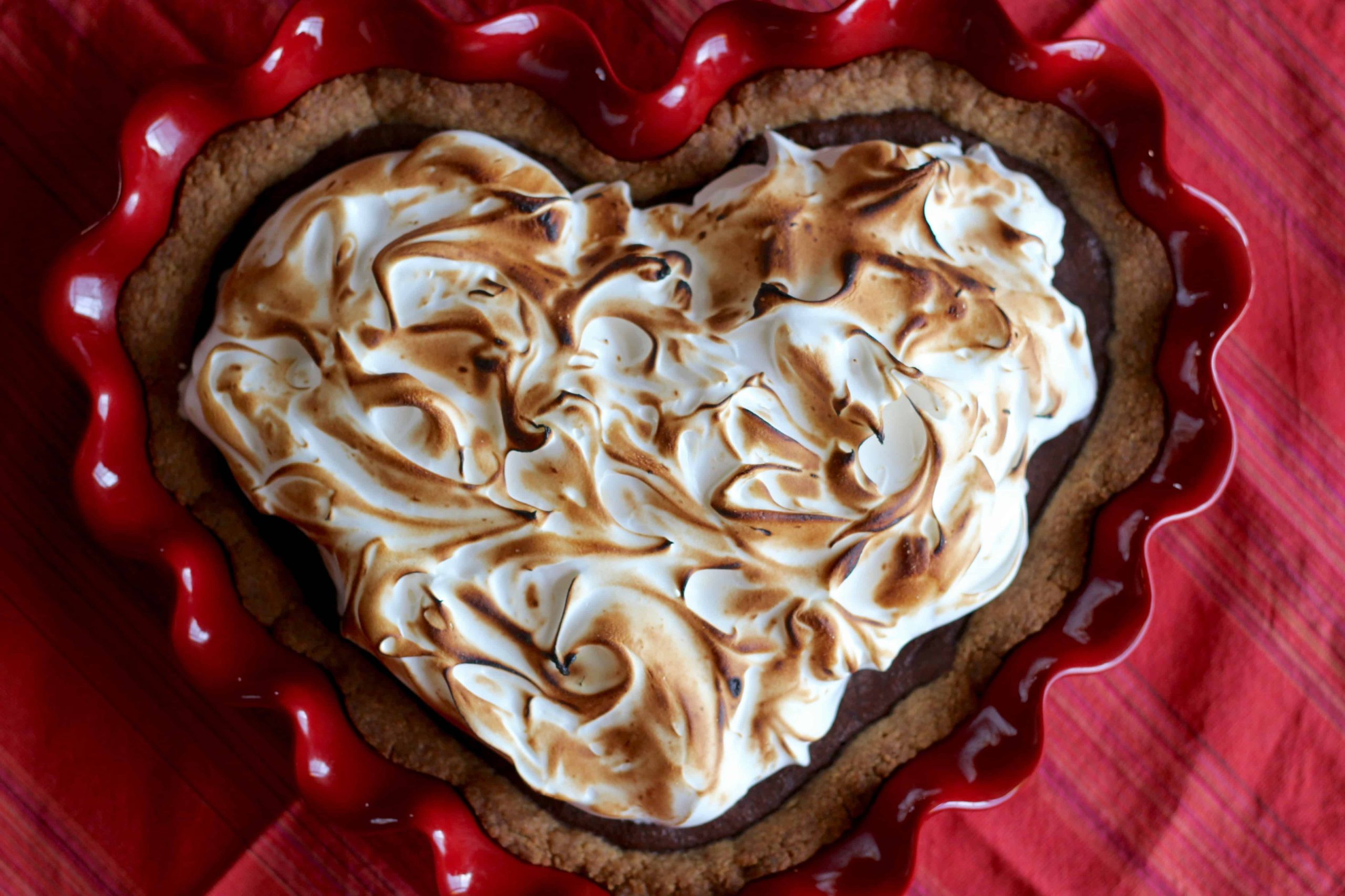
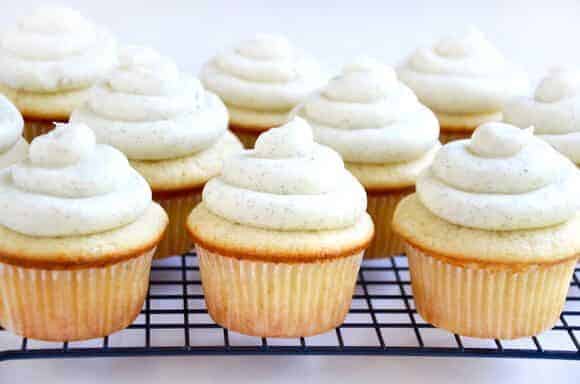
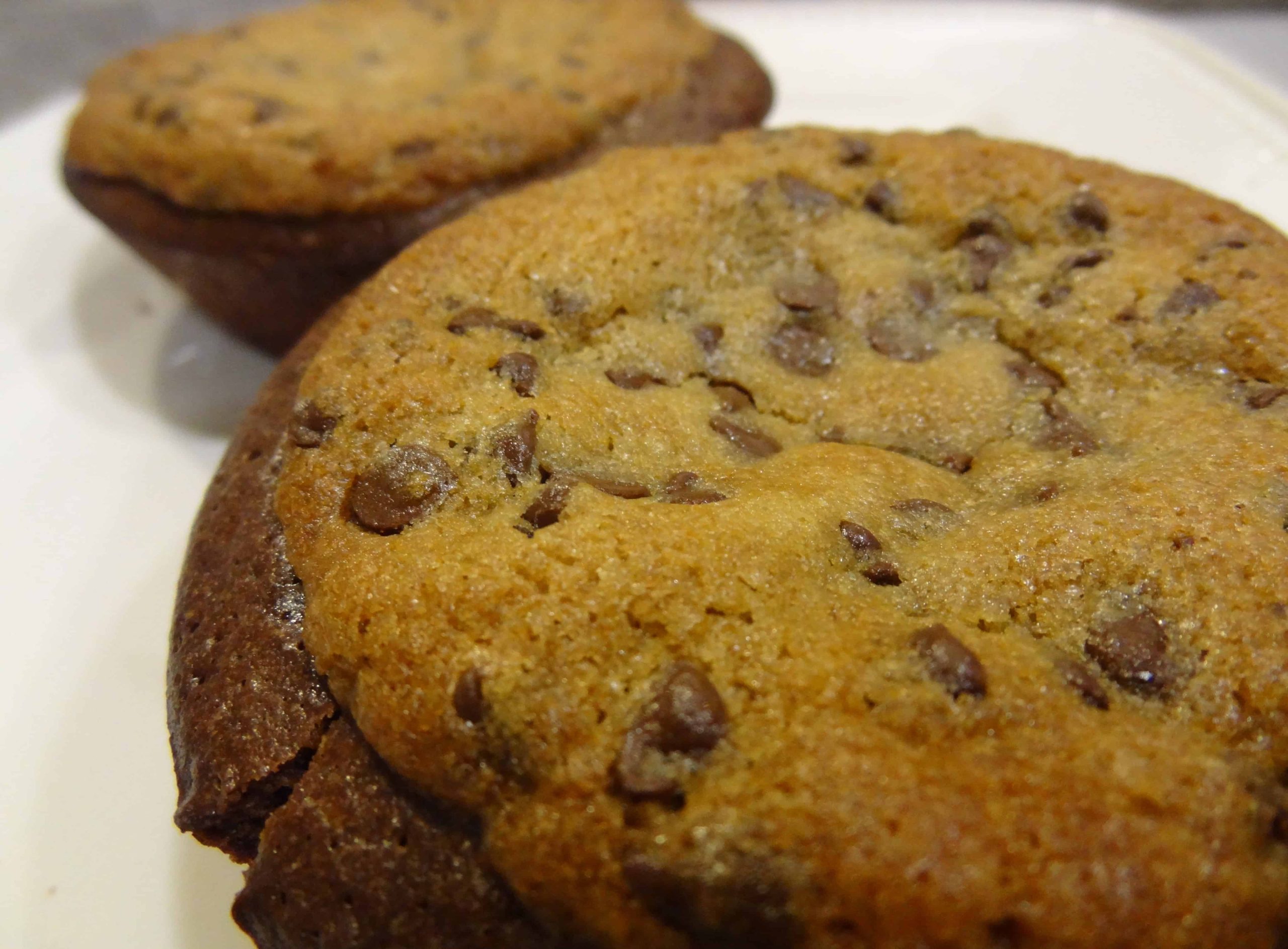
3 Responses
Wow this sounds and looks amazing! Putting it on my list for next time I have a weekend off!
Awesome! Let me know how it turns out. ?
Looks amazing! Have you ever tried the babka recipe from Breads?